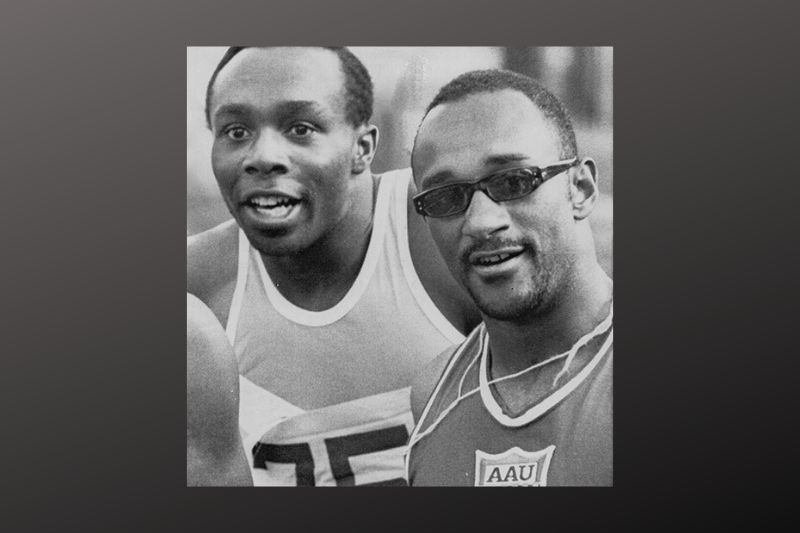
On this date in 2010, the University of Nebraska published an article about Charles Greene’s kidney transplant. Greene was a track and field champion who won the bronze medal in the 100-meter dash at the 1968 Olympic Games. He also took gold — and was part of a world-record performance — in the 4×100-meter relay in 1968.
Charles Edward (Charlie) Greene was born on March 21, 1945, in Pine Bluff. Six months after his birth, his mother, Bertha Johnson, moved them to Chicago, Ill. to escape the segregation of Pine Bluff, according to the Encyclopedia of Arkansas. In January 1946, they moved to Washington State where she took a job as a domestic worker. Later that year, the family moved to Seattle, where his mother worked as a barber and cleaned houses part-time.
Greene began running track in the fourth grade and entered competition at O’Dea High School, an all-boys Catholic school in Seattle. At O’Dea, he specialized in the 100- and 220-yard dashes. Greene won the state high school championship in the 100 in 1962, and the state titles in the 100 and 220 in 1963. He triumphed in the 100 at the Golden West Invitational in Sacramento, Cali. and ended his senior year as the number-one high school sprinter in the nation in 1963.
Greene accepted an athletic scholarship to the University of Nebraska, turning down offers from Arizona State University and San Jose State University. Since the National Collegiate Athletic Association rules did not permit freshmen to compete at that time, he raced in Amateur Athletic Union and other national-level meets. In 1964, Greene took second in the 60-yard dash at the AAU indoor national championships and in the 100 meters at the AAU outdoor national championships. At the 1964 Olympic trials, he finished sixth in the 100-meter final, slowed by a hamstring injury in the last 20 meters. At this time, Greene began wearing prescription sunglasses during races, setting himself apart from other runners.
At the University of Nebraska, Greene became the nation’s leading collegiate sprinter. He captured three consecutive NCAA titles in the 60-yard dash indoors from 1965 to 1967, three consecutive NCAA titles in the 100-yard dash outdoors from 1965 to 1967, and the AAU title in the 100 in 1966. Greene won the 100 at the 1967 NCAA championship in the meet record time of 9.21, which remained the fastest electronic time for the 100 yards until Asafa Powell of Jamaica was timed in 9.09 during a 100-meter race in 2010.
At the 1968 Olympic Games in Mexico City, Greene had the opportunity to establish himself as the world’s premier sprinter. Despite winning his quarterfinal and semifinal races in 10.02, then the fastest electronic time for 100 meters, Greene pulled a hamstring in the final and finished third with a time of 10.07 seconds. Greene combined with fellow native Arkansan Jim Hines, Mel Pender and Ronnie Ray Smith to win the 4×100-meter relay in the world-record time of 38.24 seconds.
Greene continued to compete in the 100 meters/yards through the 1972 Olympic trials. After finishing third in the 100-yard dash in 1969 and 1970 and fourth in 1971, he finished sixth in the quarter-finals of the 100 meters at the Olympic trials. During this time, however, Greene focused on other things, such as completing a graduate degree at the University of Nebraska in 1969 and earning commission as an officer in the U.S. Army upon completion of the university’s Reserve Officers’ Training Corps program that same year. He married a journalist named Linda from Philadelphia, whom he had met at the Olympic Games; they had two daughters.
Greene retired from the army with the rank of major in 1989. While in the military, he served as the sprint coach at West Point and head coach of the All-Army team. Greene became a director for Special Olympics International in Washington D.C. after which he returned to Lincoln, Neb. where he worked in student affairs at the University of Nebraska. He was inducted into the USA Track and Field Hall of Fame in 1992.

